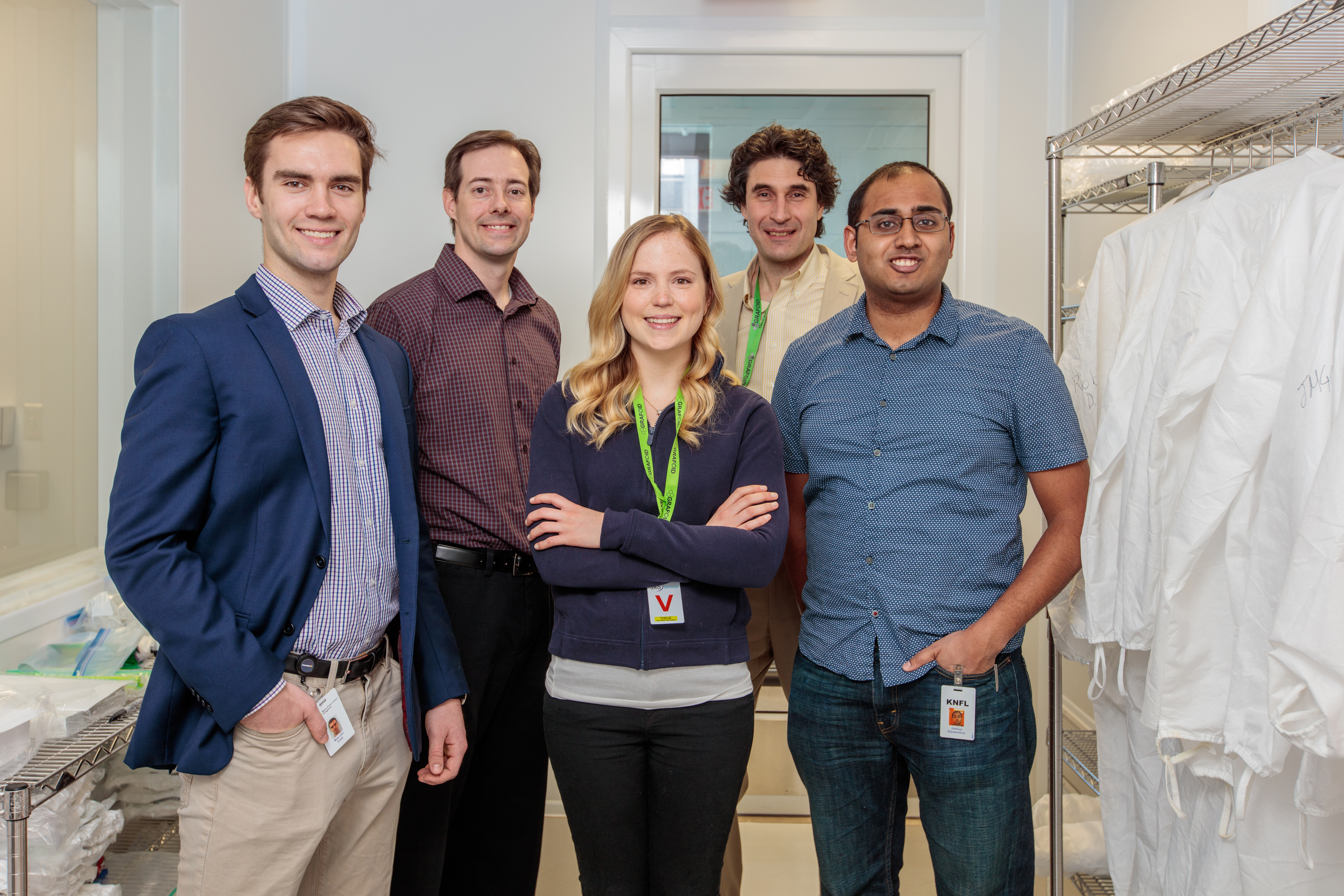Two Queen’s University PhD candidates have developed a novel, highly sensitive chemical detection technology, thanks in part to a unique nanofabrication environment created by Queen’s University and CMC Microsystems.
Hannah Dies and Josh Raveendran were two of the earliest users of NanoFabrication Kingston (NFK), a Queen’s University lab that offers open access to nanofabrication equipment, services and expertise to academics and industry.
Barely two years after the Chemical Engineering students trained on and test-drove the capabilities of the newly opened $5 million lab, the students’ work has chalked up some impressive results: two publications, a patent application, and a startup company that recently won an international business competition.
Dies and Raveendran were inspired by the work of their research supervisors, Professors Aris Docoslis and Carlos Escobedo, who were exploring chemical and biochemical sensing on tiny chips by manipulating micro- and nano-particles using microfluidics and light.
An area of particular interest to them was an ultrasensitive detection method called Surface-Enhanced Raman Spectroscopy (SERS). The method is valued because it can sense very low concentrations of chemicals, down to a single molecule, in an extremely small amount of sample.
Dies and Raveendran were tasked with developing a portable biosensor that could be used with this detection method. In doing so, they addressed a significant challenge of SERS: the lack of a cost-effective method to make the nanoscale substrates on the tiny sensor chip.
“Our original design came from our previous work in biosensing,” Dies says. “We decided to develop a chip that could concentrate silver nanoparticles.”
Their work involved developing a microfabrication process for their design, which always sounds simpler than it actually is. “It took us a year and a half to figure out how to do this,” she says. An added challenge was the need for simplicity and cost-effectiveness, because those qualities were essential if their work was to have practical applications.
The result was a rapid, simple and reproducible silicon-based nanoparticle assembly platform that was more sensitive than commercial substrates. “And because it’s a simple platform, it’s much more affordable,” Dies explains.
NFK’s sophisticated equipment and controlled cleanroom environment needed to make their design, coupled with the expertise of lab staff, were key to their success, Raveendran says. “It helped us push the boundaries. A SERS chip isn’t an easy thing to fabricate.”
In addition to helping the student gain experience on the equipment, Graham Gibson, NFK Lab Operations Manager, helped them overcome a significant hurdle by sourcing, qualifying and documenting a photoresist process for making their design. (That work is now included in a user guide that can be used by all lab users.) “Graham’s assistance was very, very helpful,” says Raveendran.
Once the chip was made, the students used it to successfully test for three contaminants – melamine in infant formula, cocaine in human saliva, and a fungicide called Thiram in apple juice – at extremely low levels.
These results piqued the interest of some Queen’s student entrepreneurs, who teamed up to form Spectra Plasmonics, which is now building on the work done by Professors Docoslis and Escobedo and their two doctoral students.
The company is off to a flying start: last year Spectra won the Lee Kuan Yew Global Business Plan Competition, placing first in a field of 550 international competitors. The prize includes $125,000 in cash and an offer of $100,000 in venture funding, as well as business development assistance.
“We saw its potential for wide-ranging applications, says Ryan Picard, a Queen’s chemical engineering graduate and Spectra’s Chief Technology Officer. “Now we want to get the chips into the hands of chemists, to get their feedback, and try different designs, to find a great first application.” Possible uses include pharmaceutical development, food safety and drug detection, among others.
Picard and the student inventors credit their success so far to the breadth of opportunity that NFK offers users. “It’s a workshop with the flexibility to do many varieties of projects,” says Picard. Dies adds, “There’s a community of people who use it, who can share recipes. Graham knows others working on similar things. It’s hard to do these things in isolation.”
Photo: David Bell/Photo Features
February 2018

